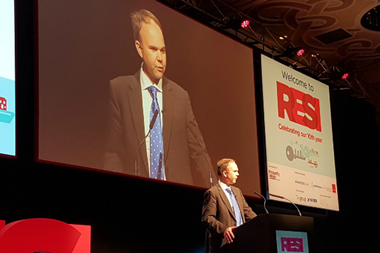Of the headlines from this month’s RESI Conference, one of the most eye-catching was Tony Pidgley’s pledge that 20% of Berkeley’s output would now be modular.

Indeed, construction innovation seems to be gripping the industry at present with institutional investors to housing associations wanting their own factory.
Such commitment is to be applauded but what has prompted it? It could be a fear that Brexit will result in higher construction costs and exacerbated labour shortages. It could be the vote of confidence from a major investor when Legal & General announced it would produce 5,000 modular units from its Yorkshire factory.
Or it could be the government’s renewed interest. While successive governments have championed construction innovation since Prescott’s £60,000 house, the fact that the new administration has done so so quickly is significant.
Whatever the stimulus, it’s got people asking whether this is a tipping point. In some ways it is. The rationale for pursuing modernised construction methods are arguably more relevant today than ever, because of labour shortages and the time savings offered, something especially attractive to rental providers.
Cost savings require scale
Yet one thing holding innovation back is a lack of significant, if any, cost savings generated by most methods. Until that materialises, traditional build will continue to account for the lion’s share of output.
Getting those cost savings requires scale. Only when one or two proponents have a substantial order book will we witness the efficiencies most believe it is capable of delivering. It is also the best way to address the scepticism that exists among builders, lenders and consumers.
In other words, what we need is a dominant market force. Paradoxically, about 70% of supply is concentrated among a handful of developers, yet there are seemingly dozens of modular-style providers in a market that represents just 16% of output. This amount of entrepreneurship is energising but the fragmented market is preventing a significant shift in build methods.
Like the tech world, we need a creative and diverse market but also some dominant forces - the modular equivalent of Google or Microsoft or, going back further, the manufacturing transformation that Ford Motors inspired.

That doesn’t mean one form of build technology or manufacturer will forever dominate but we need the equivalent to engender the revolution the workplace requires.
So who is going to trigger it? Clearly the disrupters, like the build-to-rent operators, are key. But let’s not dismiss the housebuilders. In addition to Berkeley, Barratt has been seriously looking at offsite and Taylor Wimpey is too.
A tax relief package for innovators and adopters, funding for R&D and planning measures would really help deliver scale
Admittedly, without the need for rental income, the pressure to complete schemes quickly can be less intense, but if the major builders figure out how to make modular or other methods compatible with their model, especially in higher-density schemes, it will be transformative.
And how can government foster this renewed interest? There’s already talk of the Home Builders Fund being available. This is a great start. It’s also worth government considering a more direct intervention. A tax relief package for innovators and adopters, funding for R&D and planning measures would really help deliver scale.
For example, using the new ‘permission in principle’ to fast-track schemes that incorporate innovation would offer a cracking incentive to forgo traditional build.
If government does take on such a role, there is just one unanswered question: who will be the Steve Jobs, Bill Gates or Henry Ford of modular?
Richard Blakeway is a former adviser to the prime minister and deputy mayor of London
































No comments yet